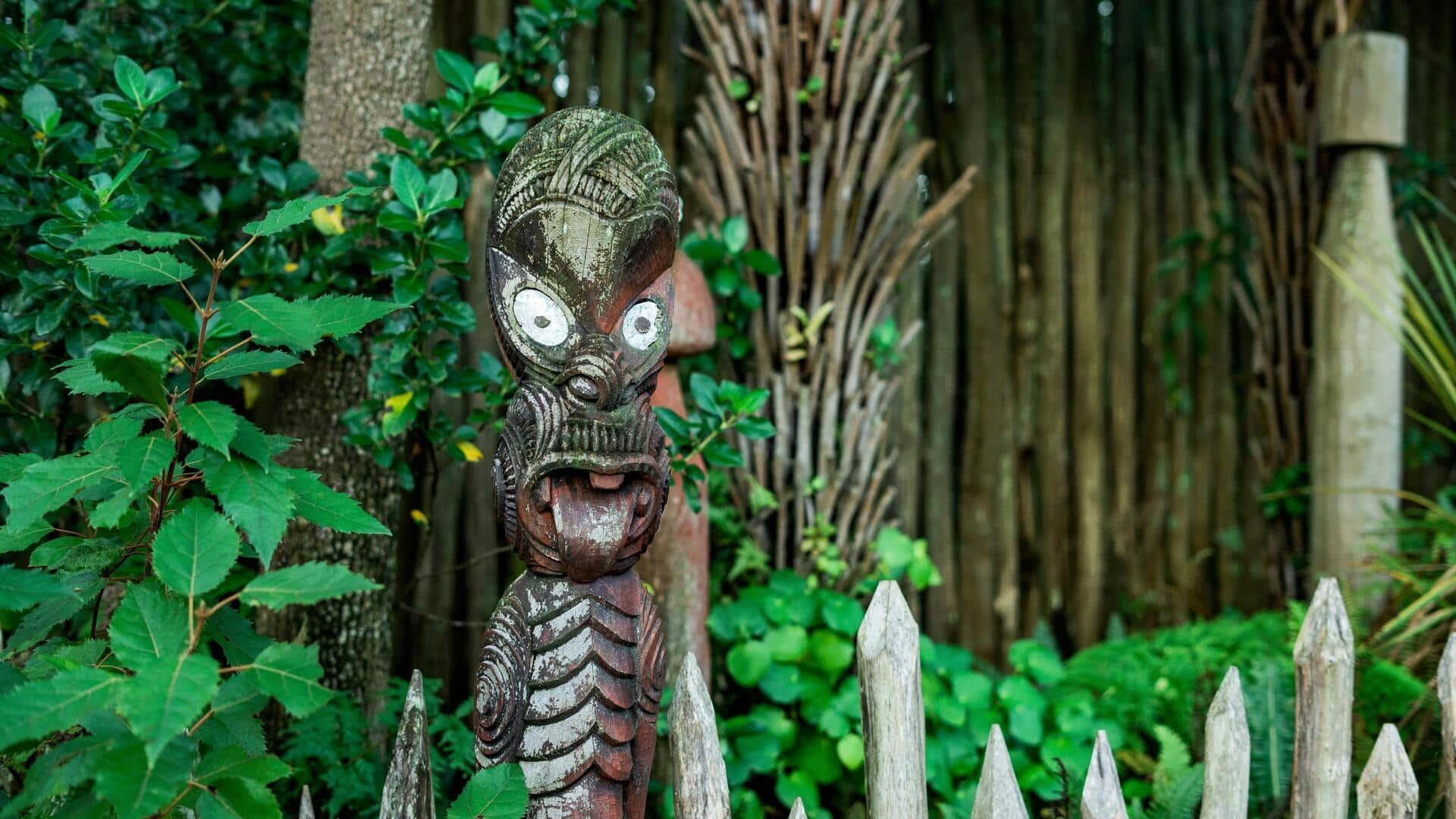
Fascinating facts about Maori art
What's the story
Maori carvings are an integral part of New Zealand's cultural heritage, showcasing the rich history and traditions of the Maori people. These intricate artworks are not just visually stunning but also hold deep meanings and stories. From the materials used to the techniques employed, every aspect of Maori carving is steeped in significance. Here are five interesting facts about these unique carvings that highlight their cultural importance.
#1
Symbolism in design
Maori carvings are famous for their intricate designs, which are full of symbols. Each symbol has a meaning, be it representing ancestors, tribal stories, or natural elements. The patterns are not just decorative but also serve as a narrative tool, telling stories of the tribe's history and beliefs. Understanding these symbols is key to appreciating the depth of Maori culture.
#2
Use of traditional tools
Traditionally, Maori carvers used tools made from natural materials like stone and bone. These tools were essential for creating the detailed work seen in carvings today. The use of traditional tools showcases the skill and patience required by artisans to create these masterpieces. Even today, some carvers prefer traditional methods to preserve authenticity in their work.
#3
Carvings as community markers
In Maori culture, carvings are also used as community markers, like on meeting houses or at the entrance of villages. These carvings serve as a welcoming gesture to visitors and also represent the identity of the community. Each carving can tell a different story about the community's ancestors or significant events in its history.
#4
Materials used in carving
Wood is the most commonly used material for Maori carvings, owing to its availability and workability. However, some artists also use stone or bone for certain pieces, owing to their durability and unique textures. The choice of material often depends on the desired effect or message behind the artwork.
#5
Learning through apprenticeship
Traditionally, the art of Maori carving was passed down through generations via apprenticeship. Young learners would spend years under the guidance of master carvers, learning the intricacies of design, technique, and cultural significance. This mentorship ensured that the knowledge was preserved and adapted over time, keeping the traditions alive while allowing for some innovation within the framework of Maori art.